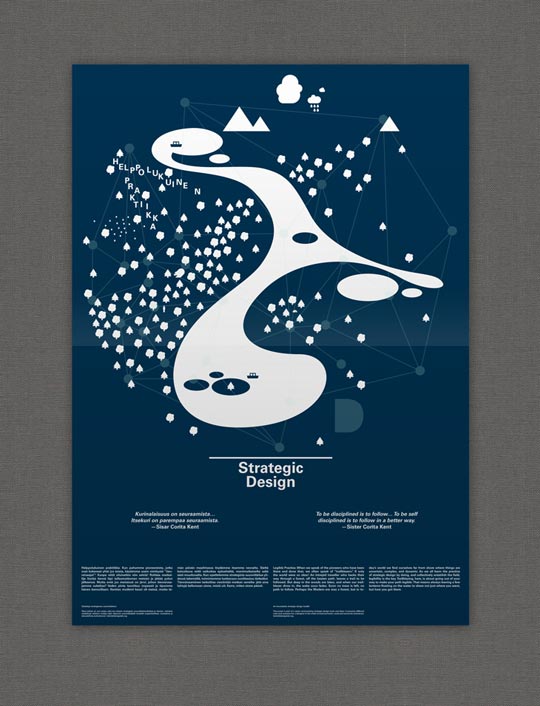Strategic design poster series
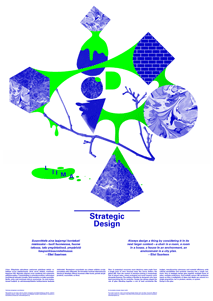

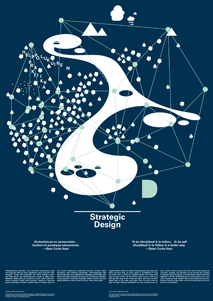
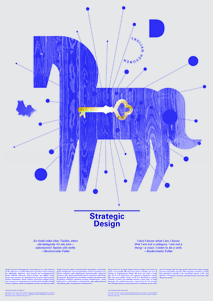
In celebration of HDL 2013, our closing event, we commissioned a limited edition series of four posters that succinctly highlight core aspects of strategic design: glue, stewardship, legible practise, and the trojan horse. While these printed posters have all been distributed, PDF versions are still available.
The originals are beautifully designed and executed by TwoPoints.net using a combination of paper and Tyvek. One even glows in the dark.
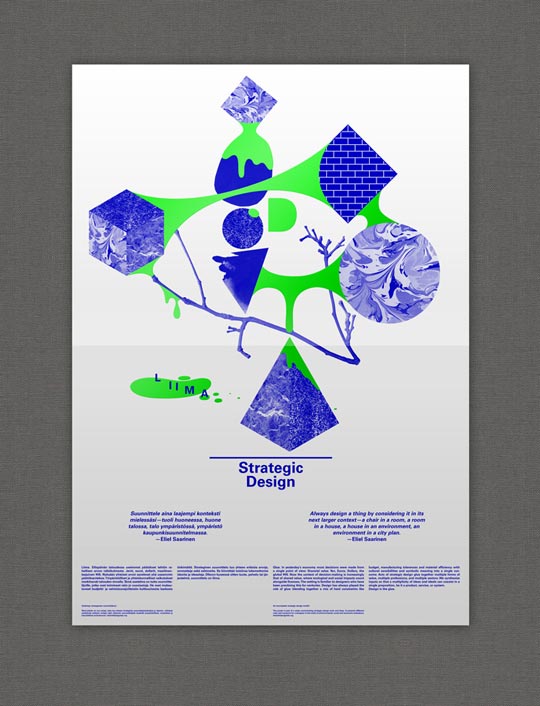
Always design a thing by considering it in its next larger context: a chair in a room, a room in a house, a house in an environment, an environment in a city plan.
—Eliel Saarinen
Glue. In yesterday’s economy most decisions were made from a single point of view: financial value. Yen, Euros, Dollars, the global ¥€$. Now the context of decision-making is increasingly that of shared value, where ecological and social impacts count alongside finances. The setting is familiar to designers who have been practicing this for centuries. Design has always played the role of glue: blending together a mix of hard constraints like budget, manufacturing tolerances and material efficiency with cultural sensibilities and symbolic meaning into a single outcome. Acts of strategic design glue together multiple forms of value, multiple professions, and multiple sectors. We synthesize inputs so that a multiplicity of ideas and ideals can coexist in a single proposition, be it a product, service, or system. Design is the glue.
When confronted by a sour note… the [musician] gets nowhere by forcing. The mistake has to be treated as an interesting fact; then the problem will eventually be unlocked.
—Richard Sennett
Stewardship. In the airtight clean room of a high tech factory word glides along effortlessly. This is the happy home of robots. Plans are executed, desires implemented. While robots may be programmed, humans require incentives, support, and convincing. Design is the task of stewarding ideas into life in the real world, where solutions do not always allow themselves to be politely engineered. Contending with the forces of nature and humanity is to balance constraints towards finding effective compromises. Stewardship is the art of getting things done when everything is not fully under your control. The steward, in the context of strategic design, frames the architecture of the problem at the beginning and then works to adjust course as surprises surface. When done well, this dissolves happenstance into intention and makes serendipity look planned. The steward never loses sight of desired ends, yet always remains open to new means.
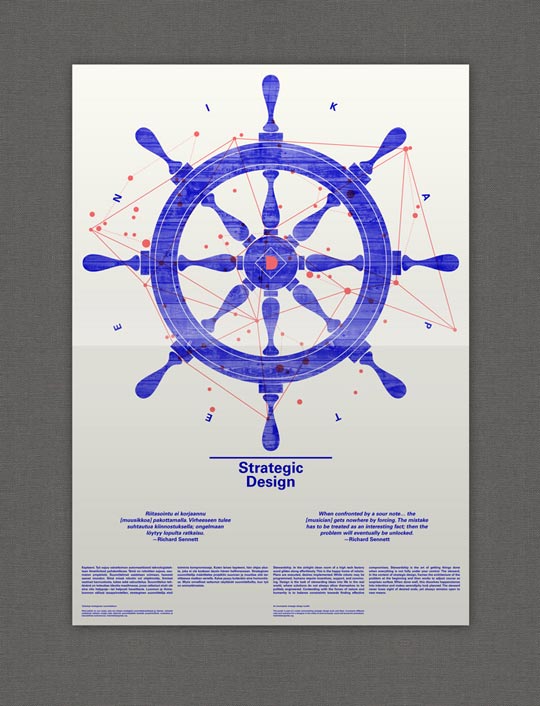
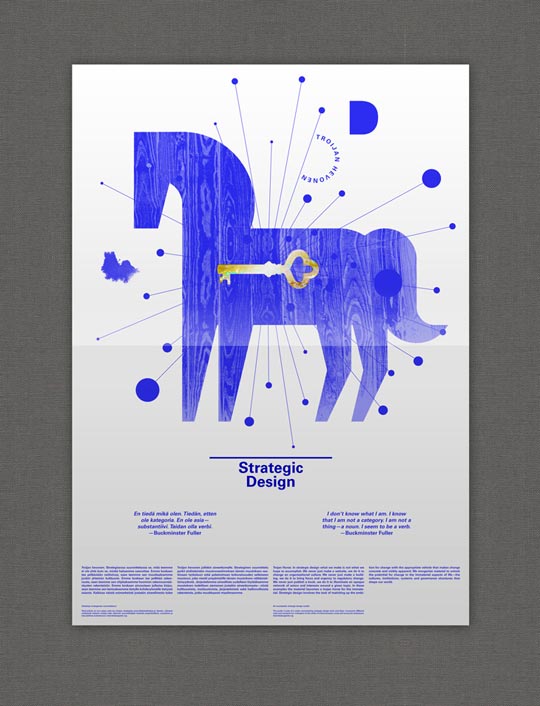
I don’t know what I am. I know that I am not a category. I am not a thing—a noun. I seem to be a verb.
—Buckminster Fuller
Trojan Horse. In strategic design what we make is not what we hope to accomplish. We never just make a website, we do it to change an organizational culture. We never just make a building, we do it to bring focus and urgency to regulatory change. We never just publish a book, we do it to illuminate an opaque network of actors and interests around a given topic. In these examples the material becomes a trojan horse for the immaterial. Strategic design involves the task of matching up the ambition for change with the appropriate vehicle that makes change concrete and visibly apparent. We reorganize material to unlock the potential for change in the immaterial aspects of life—the cultures, institutions, systems and governance structures that shape our world.
To be disciplined is to follow... To be self disciplined is to follow in a better way.
—Sister Corita Kent
Legible Practice. When we speak of the pioneers who have been there and done that, we often speak of “trailblazers”. If only the world were so clear! An intrepid traveller who hacks their way through a forest, off the beaten path, leaves a trail to be followed. But deep in the woods are lakes, and when our trailblazer dives in, the wake soon fades. Soon no trace is left, no path to follow. Perhaps the Modern era was a forest, but in today’s world we find ourselves far from shore where things are uncertain, complex, and dynamic. As we all learn the practice of strategic design by doing, and collectively establish the field, legibility is the key. Trailblazing, here, is about going out of your way to make your path legible. That means always leaving a few lanterns floating on the water to share not just where you went, but how you got there.
